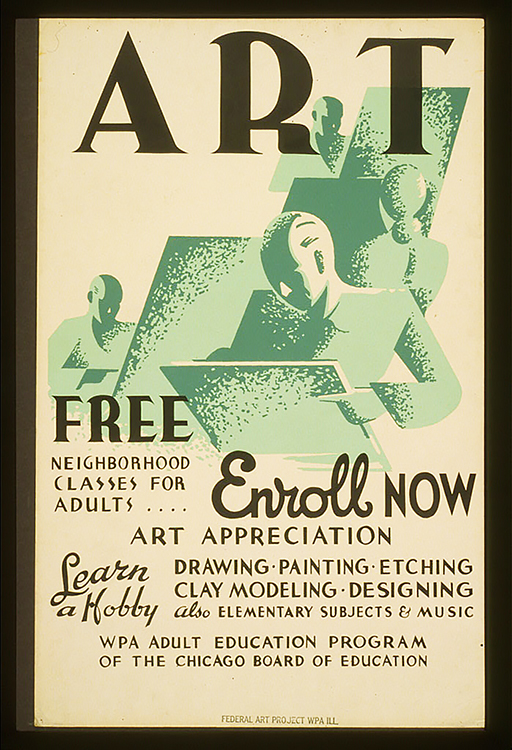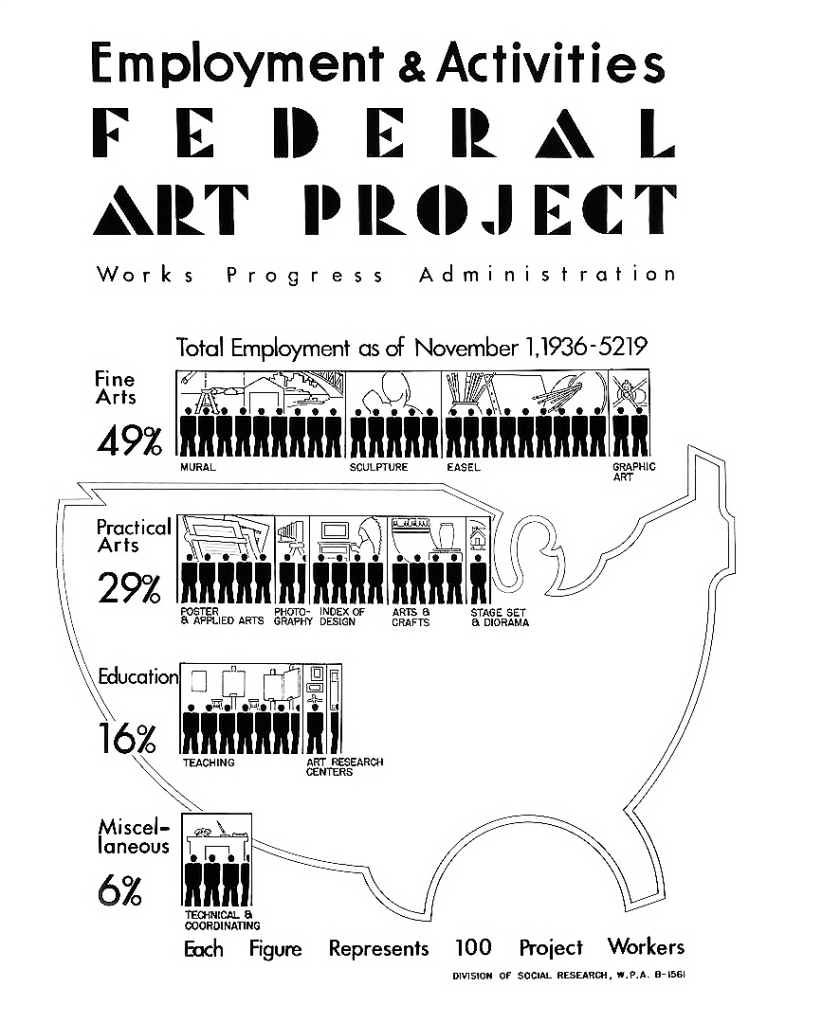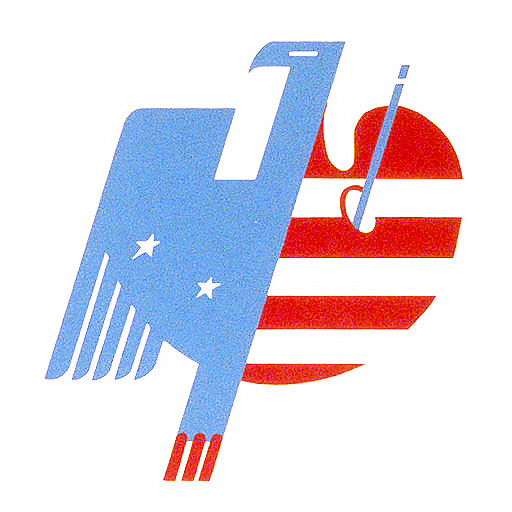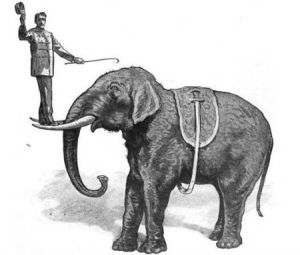
Every Thursday for the past eight months or so I’ve been going to a local art center for drawing lessons. The center is in a California-style cedar house that could only be more bohemian had it a hot tub. The two rooms inside would remind most people born before 1985 of their elementary school art classes. The walls are paneled in wood and hung with pop-surrealist prints and old awareness-campaign posters warning of the dangers of everything from tobacco to abandoned fridges. Philodendra and spider plants hang from wooden beams that span the ceiling, and there are mugs filled with pencils and paintbrushes and boxes labelled “Slides” and “Carbon Copies” and old photographs stacked on shelves along the walls. The whole place smells like chalk and oil paint and the Maxwell House instant coffee our instructor sips throughout the evening sessions.
Best of all, there’s not a piece of twenty-first century technology in sight. If you call to say you’ll be missing class, you leave a message on a cassette-tape answering machine. The instructor is the oldest of the old school. He gives you a 14-by-17-inch piece of drawing paper, an ebony pencil, and some sort of ordinary object to draw — a flowerpot, say, or a coffee grinder. Render something with fidelity to the original and he gives you praise that, since it is rare, leaves you sensing that it’s honestly earned. Otherwise, he stands behind you, studies whatever you’ve drawn as he chews his mustache, and asks, “May I sit down?” On taking your seat he points out everything you’ve done incorrectly and sets you to fixing it.
It’s a wonderful exercise in concentration and discipline. And it’s fun besides. The instructor plays jazz. Halfway through the session, his wife, who’s also an instructor, circulates through the classroom with a tin of candies to bolster us for the final hour. The students are from varied backgrounds: older millennial moms seeking a respite from children and dreary remote administrative jobs; retired physicians and nurses from a nearby hospital; and a loyal group of childless Gen Xers — a teacher burnt out from the Kafkaesque inanities of the school system that employs her, a former marketing exec who quit his position before it completely destroyed his soul, as he put it, a librarian seeking refuge from a toxic workplace. All of whom are, like me, deeply disappointed and alienated by the turn life has taken. This weekly two-and-a-half-hour art class captained by a man who has little use for the Internet represents a wormhole to a more humane and interesting time.
That more humane and interesting time began in the mid-1930s. It was a golden moment in which community art centers were established in the United States. Part of the Federal Art Project (FAP), a program under President Franklin D. Roosevelt’s New Deal for employing artists and promoting art appreciation among the public, the centers offered free courses on everything from drawing to metalsmithing. The FAP instituted a belief held by the man whose brainchild the initiative was. That man, Daniel S. Defenbacher, would go on to head the FAP of North Carolina. He maintained that art ennobled a nation and its citizens, helping the latter in making better decisions at home and in their workplaces and communities, and steering the former, as he put it, “in the development of civilization.” Defenbacher also understood that the United States was a vast country; Americans in many regions lacked access to art museums and courses. And, at any rate, even Americans who did have courses and museums within easy reach gained little from that advantage if they were unable to connect the art therein with their own lives. Defenbacher thus concluded that there existed a “need for leadership through a community workshop … where demonstrations of art in action may be presented” and where people may “refocus their use of art by doing as well as seeing.”
Defenbacher thought community art centers the perfect place to appreciate art by doing. He saw them as no different from the other social assistance programs deployed by the Roosevelt administration at the time. The government had established centers for “health, social welfare, and science,” he wrote, adding, “We must do the same for art.”

Establish them he did. The first FAP center opened in 1935. Located in North Carolina’s capital of Raleigh, it boasted an art gallery for exhibitions of local and national artists, a series of art-themed lectures, how-to’s on various art materials, and studio classes for adults and children. The Raleigh FAP would become the model for centers across the United States.
Defenbacher focused most of his efforts on rural towns of southern and western states, though several centers did also open in New York City. By the close of the FAP’s first year, 25 centers had opened their doors. Seven years later, centers numbered 103 in all and stood in 22 states. The Big Apple alone had, along with its goodly number of centers, some 600 extension centers housed in public schools, libraries, and settlement homes.
Classes were free for everyone, and each center catered to the interests and traditions of the local population. Centers in the rural South hosted classes on textile weaving, for example, whereas those in the West taught indigenous crafts such as wool embroidery. In Arizona, students made tile mosaics and fountains, which they used to decorate public squares and schools. Indeed, some centers specialized in local traditional handicrafts. FAP administrators feared that many such crafts and hobbies would disappear with the “machine age.” The preservation and teaching of these traditional crafts could benefit people, especially as those same machines had led to an increase in leisure time. (Little could these administrators guess that, about fifteen years later, people would fill that time not with traditional crafts, but with televised masscult inanities.)
Truly, you could learn all sorts of things at a FAP center. An especially busy center in the Upper Manhattan neighborhood of Harlem taught block printing, metal crafts, painting, drawing, photography, pottery, sculpture, and weaving. Some centers came to be renowned for the quality of their courses. A center in Miami, for example, excelled in sculpture and ceramics instruction, and a center in Key West stood out for its painting courses.

The FAP centers were not only a great boon for members of the public, many of whom could study art for the first time in their lives, but also for artists, who appreciated the steady paycheck and the opportunity to share their craft. The opportunity the centers provided was especially important for artists who otherwise had little hope of substantial public support. African American artist Lawrence A. Jones is one such example. As a young man in Lynchburg, Virginia, he found it almost impossible to study art. Neither public schools nor colleges open to him offering any kind of classes in art, Jones moved to Chicago, where he found work as a waiter. In the few spare hours he enjoyed, he made art. His persistence paid off. Jones received a scholarship to the Art Institute of Chicago, where he studied for four years. He then went to Dillard University in New Orleans where he served as an assistant in the Fine Arts department before finally securing a position with the FAP as an instructor.
Jones loved his work at the FAP center. Though he himself had had a difficult life, he said his work for the FAP gave him “a vivid realization of my responsibility toward the underprivileged.” On weekday evenings he taught adults. On Sundays, he taught “finger painting and simple crafts” to children in the poorer parts of the city. All his young students benefitted from his instruction, the “maladjusted and general rowdies” he taught perhaps gaining the most. Jones observed firsthand the change art can make in people’s lives. “Believing as I do that the appreciation of art cultivates in man a sincere regard for the contributions of his fellow men, regardless of race or creed,” he wrote, “I am trying through my own painting and art teaching to create a more democratic America.”
This more democratic America was on full display at FAP gallery shows. Here the work of art students, local artists, and children went on view. (FAP officials felt children’s art should be treated as seriously as art made by adults.) It was often an eclectic collection. Alongside drawings and paintings hung traditional handicrafts — metal craft, needlepoint, quilts, photography, and even handmade musical instruments. The only stipulation, as one administrator put it, was that “[e]ach exhibit must be explained to the visitor through his everyday experiences until there is a relationship established between art and himself.” Only then would art become, “in its various uses, a necessary part of his daily life.”
The FAP centers did become a necessary part of many Americans’ lives, realizing Defenbacher’s vision that they become as “indispensable as the public library.” In New York City, thirty thousand children and seven thousand adults were attending FAP classes in 1937. And the centers had measurable, positive effects. Areas high in crime saw rates decrease. When Bellevue Hospital initiated its own art classes, doctors saw improvement in patients with mental illness. And thousands of men and women were able to discover new talents and learn new skills. The artist had become a leader showing the way forward to a more democratic and humane society. “By means of our activities the Art Projects have been able to reach the millions,” said Massachusetts art administrator Thaddeus Clapp, and the artist “is no longer an exotic, but an individual functioning freely within a society that has a place for him, no longer in an ivory tower, but in contact with his time and his people.”

Despite this great success, falling unemployment and wartime priorities led the FAP and its centers to be shut down in 1943. About two weeks ago I found out that my own art course was canceled. And though I hope the course will resume in summer, I have reason to believe it won’t. Unfortunately, after scouring the Internet and local bulletin boards, I’ve discovered that there’s nothing else like it in my community. Which surprises me, because my drawing class was always full, and I think there must be people like me who would welcome the opportunity to make art alongside folks from different walks of life. But the last forty years have seen government and business favor policies and practices that have undermined, rather than bolstered, democracy. Only now, when the last vestiges of New Deal programs and policies have faded, do we see how absolutely impoverished life has become.
Here’s a recipe for Daffodil Cake from the 1940 community cookbook Food for the Body, Food for the Soul. It’s a cake I imagine might have been served at benefit dinners to raise money for a FAP center (the federal government paid for the teachers and administrators, but the community had to raise the funds to build the centers.)
Daffodil Cake
- 6 egg yolks
- 2 tablespoons water
- ½ cup sugar
- ½ pastry flour
- 1 teaspoon baking powder
- ½ teaspoon salt
- ½ teaspoon vanilla
- 6 egg whites
- 1 teaspoon cream of tartar
- ¾ cup sugar
- ½ cup pastry flour
- ½ teaspoon vanilla
- ½ teaspoon salt
Beat egg yolks with water until it is lemon color. Add other ingredients and beat well. Place in ungreased angel food pan.
Beat egg whites until frothy. Add cream of tartar and beat until stiff. Fold in other ingredients. Pour over first part. Bake 45 minutes in slow oven.

Would you rather receive The Austerity Kitchen by email? Then sign up for my Substack.
And, if you’d like to help the Kitchen keep cookin’, please consider picking up copies of my books, Why Fast? and Fermented Foods.
